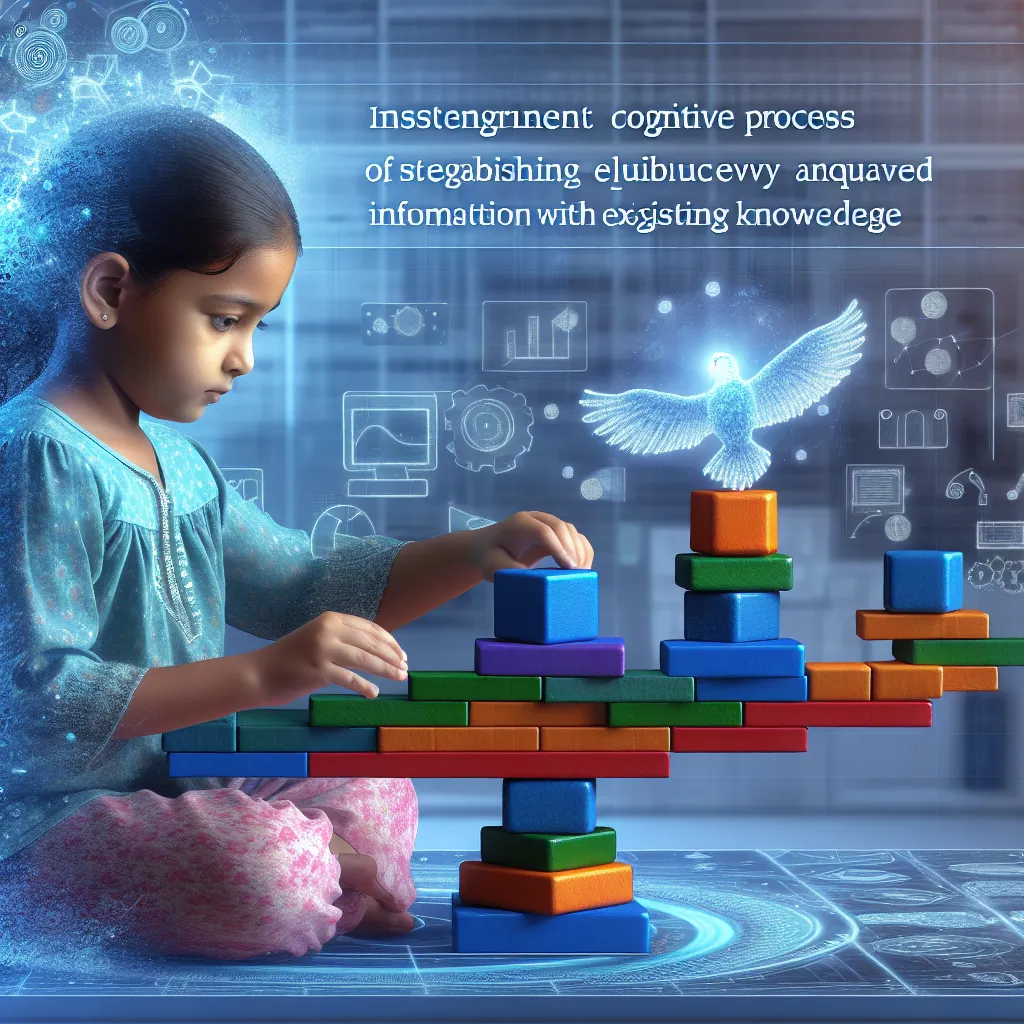Ask AI on The Internet
Question: Critically discuss the role of equilibrium in Piaget's theory of cognitive development and discuss how it relates to the balance between existing knowledge and new learning in a learner's mind. Provide ONE (1) example of a situation where a learner achieves equilibrium. (3)
Jean Piaget's theory of cognitive development is a comprehensive framework used to understand how human beings develop intellectually throughout childhood. One of the core concepts in Piaget's theory is the notion of equilibrium. This refers to the balance between assimilation and accommodation, which are two complementary processes of adaptation. Assimilation is the process of integrating new information into existing cognitive schemas, while accommodation is the modification of existing schemas to incorporate new information. Equilibrium is achieved when the cognitive structure is stable, and there's a harmonious balance between these two processes. The role of equilibrium in Piaget's theory is crucial as it drives the process of learning and intellectual growth. Piaget posited that cognitive development occurs in stages, and the achievement of equilibrium propels the learner from one stage to the next. When a learner encounters new information that doesn't fit within their existing schemas, a state of disequilibrium arises. This creates a form of cognitive discomfort that motivates the learner to either assimilate the new information into their existing framework or adjust their framework to accommodate the new information. Once this adjustment is made, equilibrium is regained, and the learner's cognitive schema is now more sophisticated and mature. Equilibrium relates to the balance between existing knowledge and new learning by highlighting the adaptive nature of cognitive development. Essentially, it demonstrates that learning is an active, dynamic process involving continuous reconstruction of knowledge. This ontological balance is critical for meaningful learning and is the essence of intellectual development. It ensures that a learner's cognitive system remains flexible and capable of developing over time. **Example of Equilibrium:** Consider a young child who has developed a basic schema for understanding the concept of animals. For instance, they might categorize all four-legged, furry creatures as "dogs." One day, they encounter a cat for the first time. Initially, the child might call the cat a "dog" due to their existing schema. This represents assimilation. However, upon receiving information from an adult that the new animal is called a "cat" and noticing differences between the dog and the cat (e.g., the cat meows, the cat's behavior, a different type of fur), the child will experience disequilibrium, as the new information does not fit perfectly with their prior understanding. To regain equilibrium, the child will go through the process of accommodation by modifying their existing schema to differentiate between cats and dogs. They will create a new category in their cognitive structures to place "cat" alongside "dog." Once this new understanding is achieved, the child is back in a state of equilibrium, now with a more nuanced comprehension of animals. In this example, the child balances existing knowledge (the concept of a dog) with new learning (the concept of a cat), illustrating the fundamental dynamics of equilibrium in cognitive development according to Piaget.
Think your answer is better than the AI's? Post it below.
Other Most Relevant Posts:
 2.1 Piaget's Theory Unveiled: Understanding Knowledge Acquisition in Learners
2.2 Unlocking the Power of Schemes: Piaget's Perspective on Cognitive Development
2.3 Assimilation Unraveled: Integrating
2.1 Piaget's Theory Unveiled: Understanding Knowledge Acquisition in Learners
2.2 Unlocking the Power of Schemes: Piaget's Perspective on Cognitive Development
2.3 Assimilation Unraveled: Integrating
 2.1 Piaget's Theory: Understanding How Learners Acquire Knowledge.
2.2 Unraveling "Schemes": Piaget's Concept of Learners' Cognitive Structures.
2.3 Assimilation in Piaget's Theory: Integrating New
2.1 Piaget's Theory: Understanding How Learners Acquire Knowledge.
2.2 Unraveling "Schemes": Piaget's Concept of Learners' Cognitive Structures.
2.3 Assimilation in Piaget's Theory: Integrating New
 2.1 Piaget's Theory of Knowledge Acquisition: Exploring How Learners Develop Understanding
2.2 Unlocking the Power of Schemes: Piaget's Idea of Learners Interacting and Modifying Their Mental Structu
2.1 Piaget's Theory of Knowledge Acquisition: Exploring How Learners Develop Understanding
2.2 Unlocking the Power of Schemes: Piaget's Idea of Learners Interacting and Modifying Their Mental Structu
Question Tags
If you want your question answered by an AI, click here.




Post your own comment: